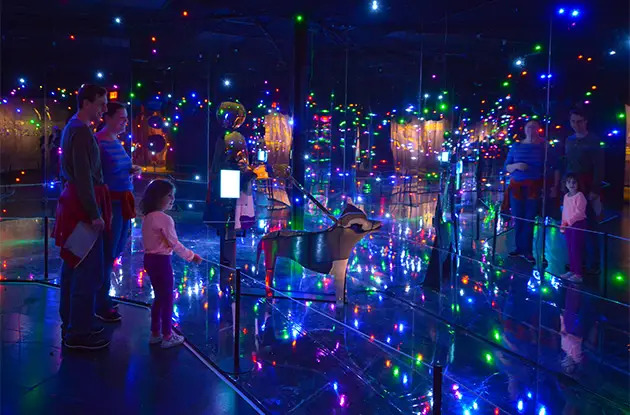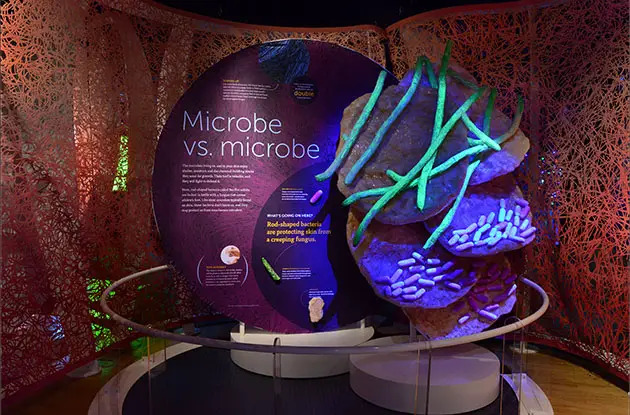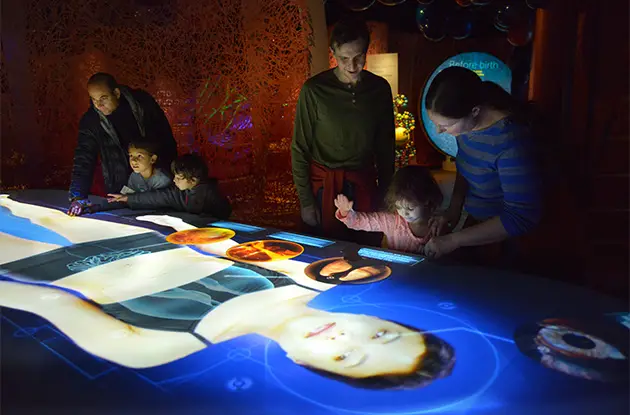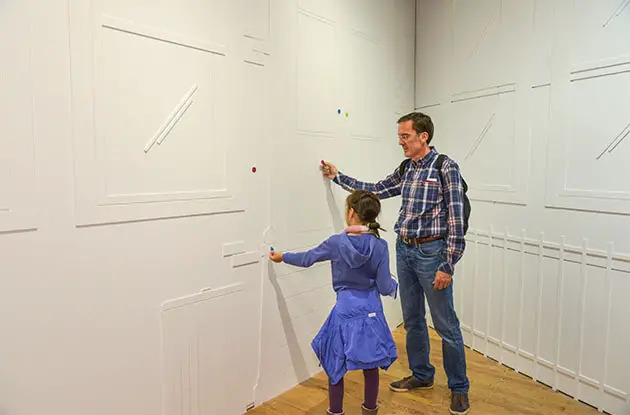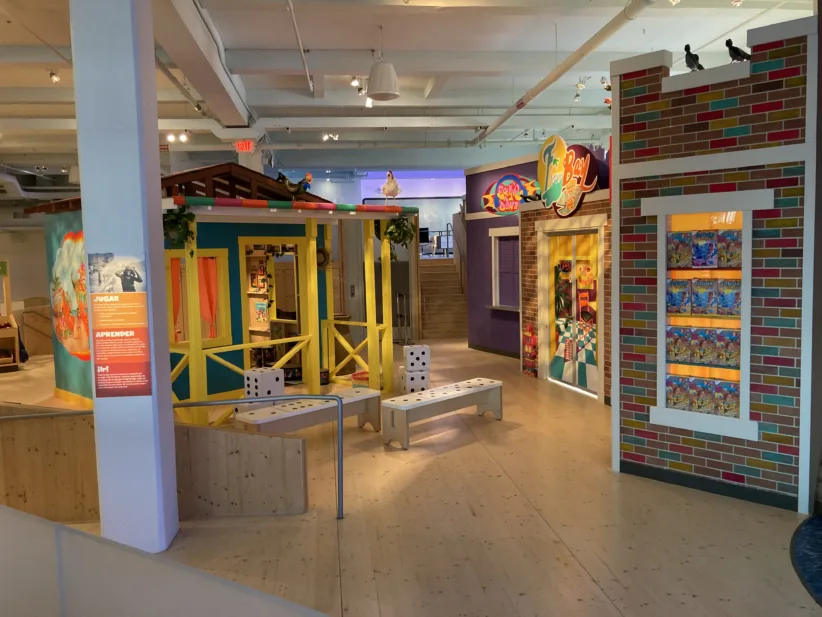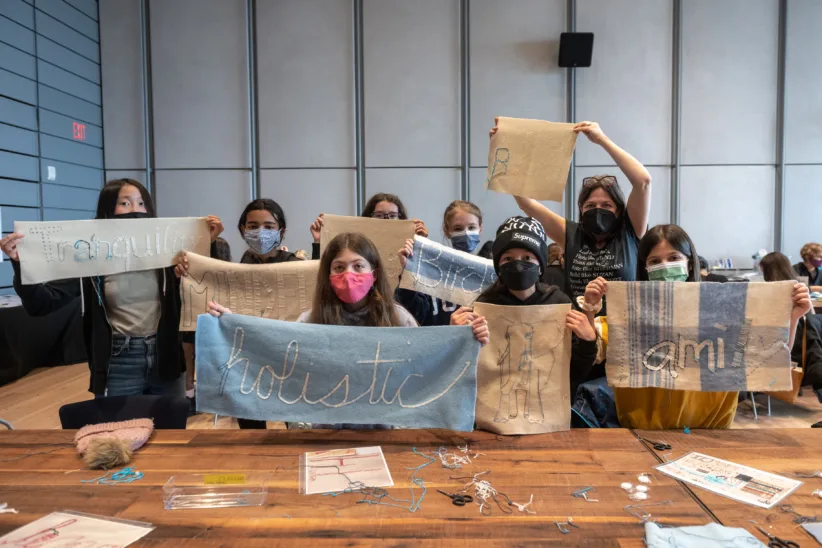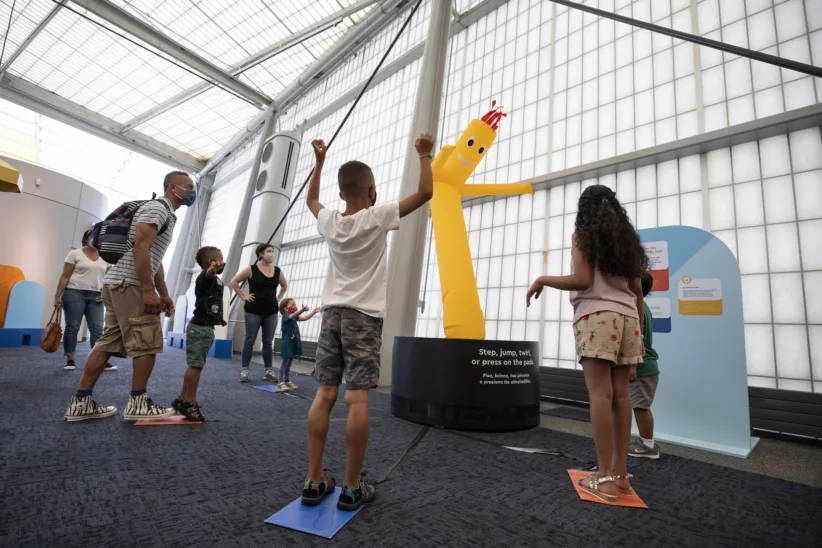The American Museum of Natural History’s newest science exhibit for kids, The Secret World Inside You, explores the human body as an ecosystem made up of trillions of single-cell organisms that affect your body and health.
“You probably don’t think of yourself as an ecosystem, but that, in fact, is what you are,” said Ellen Futter, president of the American Museum of Natural History. The museum’s newest exhibit The Secret World Inside You, takes guests on an intriguing journey to explore the ecosystem—containing trillions of individual microbes (single-cell organisms that are mainly bacteria in the body)—that is your body through games and interactive videos, larger-than-life models, lightscapes, and diagrams. The exhibit is on view Nov. 7-Aug. 14, 2016, and “it will change the public’s understanding of ourselves—our bodies and our health,” Futter said.
The exhibit explains the human microbiome, made up of the microbial communities; how it has evolved with us to keep our digestive system, immune system, and brain functioning properly; and the factors that influence our microbiome—birth, our environment, and our diets. Visitors will take a tour through the human body, making stops at places where microbes thrive—skin, mouth, and gut—and explore where microbes came from.
“The microbial diversity around us is just amazing. It’s wonderful to me to look at it and just think about all of these things interacting with me, and it’s amazing that I’m still alive,” said Rob DeSalle, co-curator of the exhibit. “The really important thing is that we understand these interactions, and learning why we are alive in the midst of all of these guys is really going to advance our knowledge about ourselves and about our health.”
RELATED: Find Museums and Planetariums Near You
|
Your body is home to trillions and trillions of individual bacteria—more than all the stars in the Milky Way. This light room gives visitors a sense of the vastness of this microscopic universe living on and in you. |
Upon entering the exhibit, guests will walk through a mirrored walkway full of lights, which represent the trillions of microbes on and inside our bodies, to a 7-minute film that explains what microbes are and their crucial role on Earth, from making oxygen for the atmosphere to providing energy for our muscles.
|
In this model of human skin cells, rod-shaped bacteria (purple) are locked in battle with a fungus (green) that causes athlete’s foot. Like most microbes typically found on skin, these bacteria don’t harm us, and they may protect us from treacherous intruders. |
Throughout the exhibit, guests will learn about some of the major species of microbes and where they thrive on the skin; explore how environment and lifestyle (gender, pets, where you live) effects the microbiome; how microbes are transferred from person to person; and how different species of microbes compete for valuable space on your skin—bacteria protects us from the fungus that causes athlete’s foot—and learn what makes feet and armpits so stinky. FYI, it’s bacteria. Visitors will also learn where humans get microbes; how the microbes acquired during childhood help the development of the immune system; and how microbial communities affect your health.
|
This 14-foot projection of a pregnant woman’s body, as part of an interactive table, highlights ways that microbes impact human health. |
The digestive system is where the majority of our microbes live—99 percent of the microbes in our bodies live in the large intestine. In the digestive system area of the exhibit, guests will explore the bacteria that live in the mouth; learn what foods stimulate the immune system and feed beneficial bacteria; how the microbiome can affect appetite; and investigate the evidence that links the gut microbiome to behavior, anxiety, and depression.
“Learning about how we behave, the things we do, the foods we eat, the antibiotics and other medicines we might take and their effects on our microbiome gives each and every one of us the power to do something that directly effects our health,” said Susan Perkins, co-curator of the exhibit. “And I find that super exciting.”
For more information, visit amnh.org.
|
At the end of the exhibition, visitors are asked to leave microbe stickers in a room that started off with blank walls—but not for long—to symbolize that microbes are everywhere. |
RELATED: Get News About Other New Exhibits
Main photo: The majority of your body’s microbiome—more than 99 percent—can be found inside your digestive tract. This model shows Bacteroidetes bacteria consuming cellulose, the basic building block of plants—one of many nutrients that we could not digest without the aid of internal microbes.
© AMNH/R. Mickens











